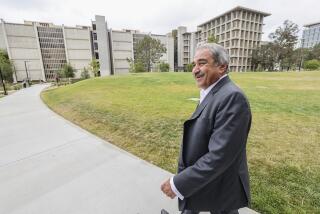V.A., UCSD to Manage Body Scanner Center
- Share via
A multimillion-dollar, state-of-the-art scanning device that evaluates brain function, tumors, and heart and neurological diseases will be brought to San Diego for the first time and operated by doctors with the V.A. and UC San Diego, officials said Tuesday.
The scanning device provides an image of the whole body and its neurological system, enabling doctors to see organ function and chemistry. Although other scanning devices offer an image of the body’s structure, the positron emission tomography scanner shows functions, said Nancy Stringer, a UCSD spokeswoman.
In the brain, for instance, the PET scanner can show the flow of blood or any disturbances. In the body, it can show whether arteries are blocked.
“It’s a fairly major deal for the region,” Stringer said. “These are extremely valuable tools in both research and patient care.”
Officials from each of the two institutions have agreed to pay $4.1 million to set up a center to house two PET scanners. The center, which will be at the V.A. hospital next to the UCSD campus in La Jolla, will open in the fall of 1992. Until it does, the nearest PET device is at UC Irvine.
“Both veterans and nonveterans in the San Diego area will benefit from this shared facility,” said Thomas A. Trujillo, director of the V.A. hospital.
Gerard N. Burrow, UCSD’s vice chancellor for health sciences, said the technology will allow scientists to edge forward in studying heart disease, mental illness and other conditions.
PET scanners were introduced for clinical use in the 1970s. The devices offer an image by tracing the path and absorption of radioactive particles administered to the patient.
More to Read
Sign up for Essential California
The most important California stories and recommendations in your inbox every morning.
You may occasionally receive promotional content from the Los Angeles Times.












